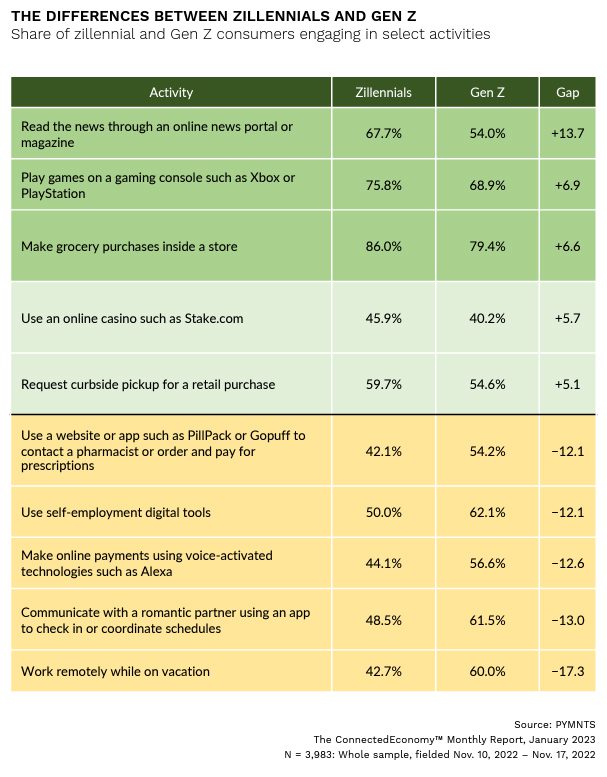Cross-channel purchasing options may be a key loyalty approach for grocers seeking to capture this bridge generation.
Why Is This Important?
Capturing this demographic just as they’re gaining financial independence could be key for grocers and other retailers seeking to increase customer loyalty. Zillennials represent the 30 million U.S. consumers born between 1990 and 2000. Bridging Gen Z and older millennials, this consumer generation is the first not to remember a pre-internet world, per the latest PYMNTS ConnectedEconomy™ Monthly Series. Zillennials are among the most connected of any generation — they are nearly two-and-a-half times more engaged than boomers or seniors and 36% more engaged than Gen X.

What Sectors Are Most Impacted?
Grocery stores, especially independents that may have yet to fully explore broadening their payment and purchasing options, will most likely benefit from tapping into the zillennial consumer group. They are generally competing with much larger players like Walmart or Kroger, which have the resources to underprice the sector’s smaller players.
What Does the Industry Say?
Expanding in-store payment options and related technologies is a growing trend across the sector — and with good reason. As PYMNTS research has found, online shoppers in the U.S. pick up in-store orders four times more often than in other major countries and are 47% more likely to buy more once they are inside. While zillennials may be more likely to make grocery purchases in-store, these cross-channel purchasing habits span multiple age groups.
How Are Businesses Responding?
Understandably in these cash-strapped times, some grocers have chosen to do nothing or pull back on in-store purchasing options and other innovations. However, this short-term cost-cutting solution is a loyalty gamble.
For Albertsons, the longer view on retention and loyalty seems to work. Earlier this month, the Kroger-acquired grocery giant reported its Q3 earnings, where its digital sales rose 33% year over year and loyalty membership grew 16% during the same period.
For relatively smaller chains, such as Michigan-based Meijer, loyalty program investments are similarly paying off. Earlier this month, Meijer announced improvements to its mPerks loyalty program to improve its personalized rewards capabilities. These new perks include using these rewards for the chain’s payment, pickup and delivery options.
Some grocers — notably BJ’s and Walmart — are investing in broader payment options by offering scan-and-go checkout. A PYMNTS and ACI Worldwide collaboration found that 28% of U.S. merchants, including grocers, are investing in scan-and-go capabilities. However, the technology is far from a sure bet. Some grocers found scan-and-go effective, while others found the option too costly to maintain.
With 37% of consumers ordering their groceries digitally to pick up in-store, cross-channel purchasing options may appeal to shoppers across demographics, particularly to zillennials. These internet natives show how a mix of online and in-store options can improve their daily lives and win their loyalty.